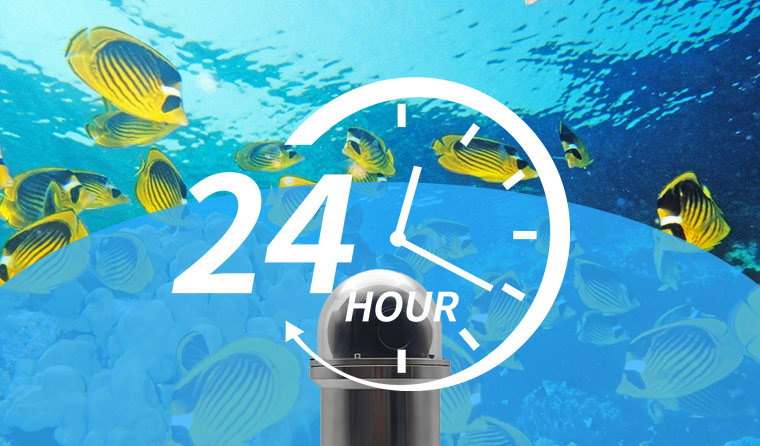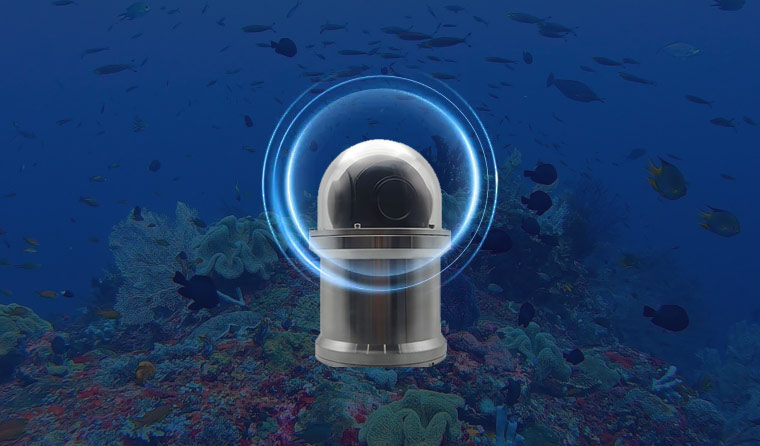
To ensure that underwater aquaculture cameras operate continuously and with high quality around the clock, the equipment itself must meet strict standards in terms of "durability", "functionality", and "stability". Specifically, the following four aspects should be considered:
1. Super Waterproof and Pressure-Resistant Performance: Coping with Long-Term Submersion
24-hour monitoring means the camera must be submerged in seawater (or freshwater aquaculture ponds) non-stop throughout the year. It must have a waterproof rating of IP68 or higher and pass the "depth pressure resistance test" — select a pressure-resistant model corresponding to the aquaculture water depth (1-5 meters for shallow water areas, 5-20 meters for deep water areas) to prevent shell rupture caused by water pressure and internal circuit damage due to seawater leakage. The camera body should preferably be made of 316L stainless steel or titanium alloy, which can not only resist long-term corrosion by seawater but also prevent external damage caused by scratches from aquaculture organisms (such as crabs and lobsters).
2. Night Vision and Fill Light: Eliminating Day-Night Image Quality Differences
Nighttime is a high-risk period for aquaculture, so the camera must be equipped with high-definition night vision function: If infrared fill light is selected, it is necessary to ensure that the infrared lamp has sufficient power (10-20W is recommended) and that the effective night vision range covers the aquaculture monitoring area (usually 5-10 meters), while ensuring that the infrared light does not irritate aquaculture organisms; If color night vision is required for the aquaculture scenario (e.g., observing color changes of specific organisms), a low-power white light lamp can be used. This ensures clear image quality while avoiding biological stress responses caused by strong light. Whether infrared or white light fill is used, the camera must support "automatic light sensitivity adjustment" to switch modes according to the ambient light intensity, preventing overexposure during the day and underexposure at night.

3. Stable Data Transmission: Ensuring "No Freezing or Interruption" of Images
The core value of 24-hour monitoring lies in "real-time performance"; if data transmission is interrupted, the monitoring will lose its meaning. Therefore, the camera must be adapted to a stable transmission method: For shallow water or near-shore aquaculture, "wired transmission" (such as network cables or optical fibers) can be selected, which has strong anti-interference ability for signals and is suitable for long-term continuous transmission; For deep water or offshore aquaculture, "5G/4G wireless transmission" is preferred, combined with a high-gain antenna to ensure that images can be transmitted back to terminals (mobile phones, computers, monitoring screens) in real time even in complex water environments, with the delay controlled within 1-3 seconds. At the same time, the equipment must support the "network reconnection after disconnection" function — if the network fluctuates temporarily, it can automatically resume transmission after recovery to avoid "interruption" in monitoring.
4. Low Power Consumption and Durable Power Supply: Supporting All-Day Battery Life
24-hour monitoring has extremely high requirements for power supply endurance. If an external power supply is used, a dedicated underwater cable with corrosion resistance and waterproof performance must be selected to avoid leakage due to line aging; For remote areas without external power supply, a combination of "solar power supply + storage battery" can be used. The storage battery capacity must meet the power supply needs for consecutive rainy days (3-5 days). At the same time, the camera itself must have a "low-power mode" to automatically reduce the image frame rate (without affecting monitoring effects) when no one is viewing it at night, thereby reducing power consumption.
For more information about underwater aquaculture camera, please visit the homepage.

